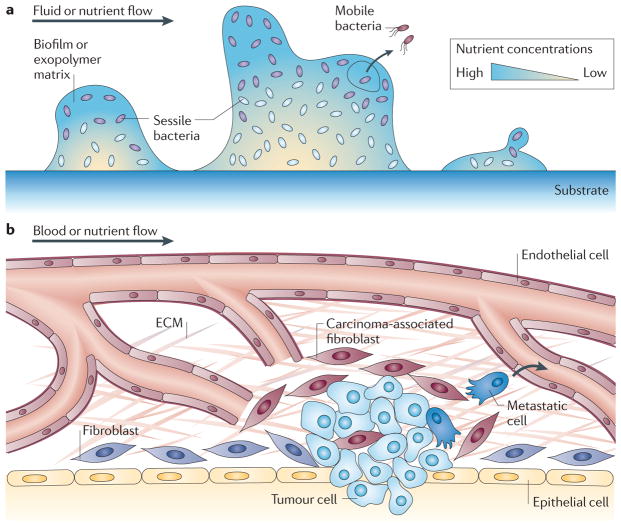Figure 2. Changes in microenvironments.
a | A community of bacteria can form biofilms by attaching to a substrate and by producing large amounts of a polysaccharide-based exopolymer matrix that links cells together. As the extracellular matrix (ECM) encases the cells and greatly hinders their motion, cells switch from a motile to a sessile state. The matrix greatly limits nutrient and oxygen diffusion and cells inside the biofilm become specialized according to the metabolites present. (Subsistence on different nutrient sources is indicated by the different colours of the cells in different regions.) Some cells, not unlike metastatic cancer cells, are able to break through the exopolymer matrix and leave the biofilm to populate different environments. b | The type of cells associated with a tumour, notably carcinoma-associated fibroblasts, produce signals that influence the behaviour of tumour cells. Also, the stroma and ECM surrounding a tumour is much denser than that surrounding normal tissue and the diffusion of nutrients and oxygen from the blood vessels is therefore greatly diminished by the tumour-associated ECM and stroma. Metastatic cells (dark blue) may also leave the primary tumour and disseminate throughout the body.

